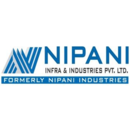Unlocking the Sustainability of LGSF: Exploring Recyclability and Life Cycle Assessment
Contents |
[edit] Introduction
In the world of construction, sustainability has become a top priority. As we strive to build a greener future, innovative methods like Light Gauge Steel Framing (LGSF) are gaining traction. This article takes you on a fascinating journey into the realm of LGSF, shedding light on its recyclability and life cycle assessment. Get ready to unlock the potential of Light Gauge Steel Framing as we delve into its sustainable features and the impact it can have on the environment.
[edit] Understanding recyclability
One of the remarkable aspects of Light Gauge Steel Framing is its recyclability. Unlike traditional construction materials that end up in landfills, LGSF components can be easily dismantled and recycled at the end of a building's life cycle. We'll explore the process of recycling steel and how it contributes to reducing waste, conserving resources, and minimising the carbon footprint. Discover the endless possibilities of giving steel a new life and embracing a circular economy approach.
[edit] Life Cycle Assessment
Unveiling the Environmental Impact: To truly understand the sustainability of Light Gauge Steel Frame, we must assess its environmental impact throughout its life cycle. We'll embark on a comprehensive exploration of the life cycle assessment (LCA) methodology, which evaluates the environmental aspects and potential impacts associated with Light Gauge Steel Frame. From raw material extraction and manufacturing to construction, occupancy, and end-of-life scenarios, we'll uncover the ecological footprint of LGSF and its comparison to other construction methods.
[edit] Sustainable advantages of LGSF
Beyond recyclability and life cycle assessment, LGSF offers a multitude of sustainable advantages that make it a compelling choice for environmentally conscious construction projects. We'll delve into these benefits, including energy efficiency, reduced waste generation, improved indoor air quality, and adaptability for future modifications. Discover how Light Gauge Steel Frame contributes to creating sustainable, comfortable, and resilient buildings.
[edit] Case studies and success stories
To provide a real-world perspective, we'll delve into inspiring case studies and success stories where LGSF has been successfully implemented. From residential and commercial structures to institutional and industrial buildings, these examples showcase the remarkable sustainability achievements and positive outcomes of Light Gauge Steel Frame projects. Prepare to be inspired by the innovative design solutions and environmental benefits achieved through LGSF construction.
[edit] Paving the way for a sustainable future
As we conclude this journey into the sustainability of Light Gauge Steel Frame, we'll reflect on the significant role it plays in paving the way for a greener future in the construction industry. With its recyclability, favorable life cycle assessment, and numerous sustainable advantages, Light Gauge Steel Frame stands as a testament to sustainable building practices. Embrace the potential of Light Gauge Steel Frame and join the movement towards a more sustainable and eco-friendly built environment.
Incorporating LGSF into your construction projects is a step towards a brighter and more sustainable future. Unlock the potential of LGSF today and be a part of the sustainable construction revolution.
--Nipani Infra & Industries Pvt.ltd
[edit] Related articles on Designing Buildings
- Braced frame.
- Concept structural design of buildings.
- Concrete frame.
- Concrete-steel composite structures.
- Girder.
- Guidance for construction quality management professionals: Structural Steelwork.
- Light gauge steel framing systems
- Light steel frame.
- Portal frame.
- Off-site prefabrication of buildings: A guide to connection choices.
- Skeleton frame.
- Steel frame.
- Structural steelwork.
- Timber frame.
- Types of frame.
- Types of steel.
Featured articles and news
One of the most impressive Victorian architects. Book review.
RTPI leader to become new CIOB Chief Executive Officer
Dr Victoria Hills MRTPI, FICE to take over after Caroline Gumble’s departure.
Social and affordable housing, a long term plan for delivery
The “Delivering a Decade of Renewal for Social and Affordable Housing” strategy sets out future path.
A change to adoptive architecture
Effects of global weather warming on architectural detailing, material choice and human interaction.
The proposed publicly owned and backed subsidiary of Homes England, to facilitate new homes.
How big is the problem and what can we do to mitigate the effects?
Overheating guidance and tools for building designers
A number of cool guides to help with the heat.
The UK's Modern Industrial Strategy: A 10 year plan
Previous consultation criticism, current key elements and general support with some persisting reservations.
Building Safety Regulator reforms
New roles, new staff and a new fast track service pave the way for a single construction regulator.
Architectural Technologist CPDs and Communications
CIAT CPD… and how you can do it!
Cooling centres and cool spaces
Managing extreme heat in cities by directing the public to places for heat stress relief and water sources.
Winter gardens: A brief history and warm variations
Extending the season with glass in different forms and terms.
Restoring Great Yarmouth's Winter Gardens
Transforming one of the least sustainable constructions imaginable.
Construction Skills Mission Board launch sector drive
Newly formed government and industry collaboration set strategy for recruiting an additional 100,000 construction workers a year.
New Architects Code comes into effect in September 2025
ARB Architects Code of Conduct and Practice available with ongoing consultation regarding guidance.
Welsh Skills Body (Medr) launches ambitious plan
The new skills body brings together funding and regulation of tertiary education and research for the devolved nation.
Paul Gandy FCIOB announced as next CIOB President
Former Tilbury Douglas CEO takes helm.























